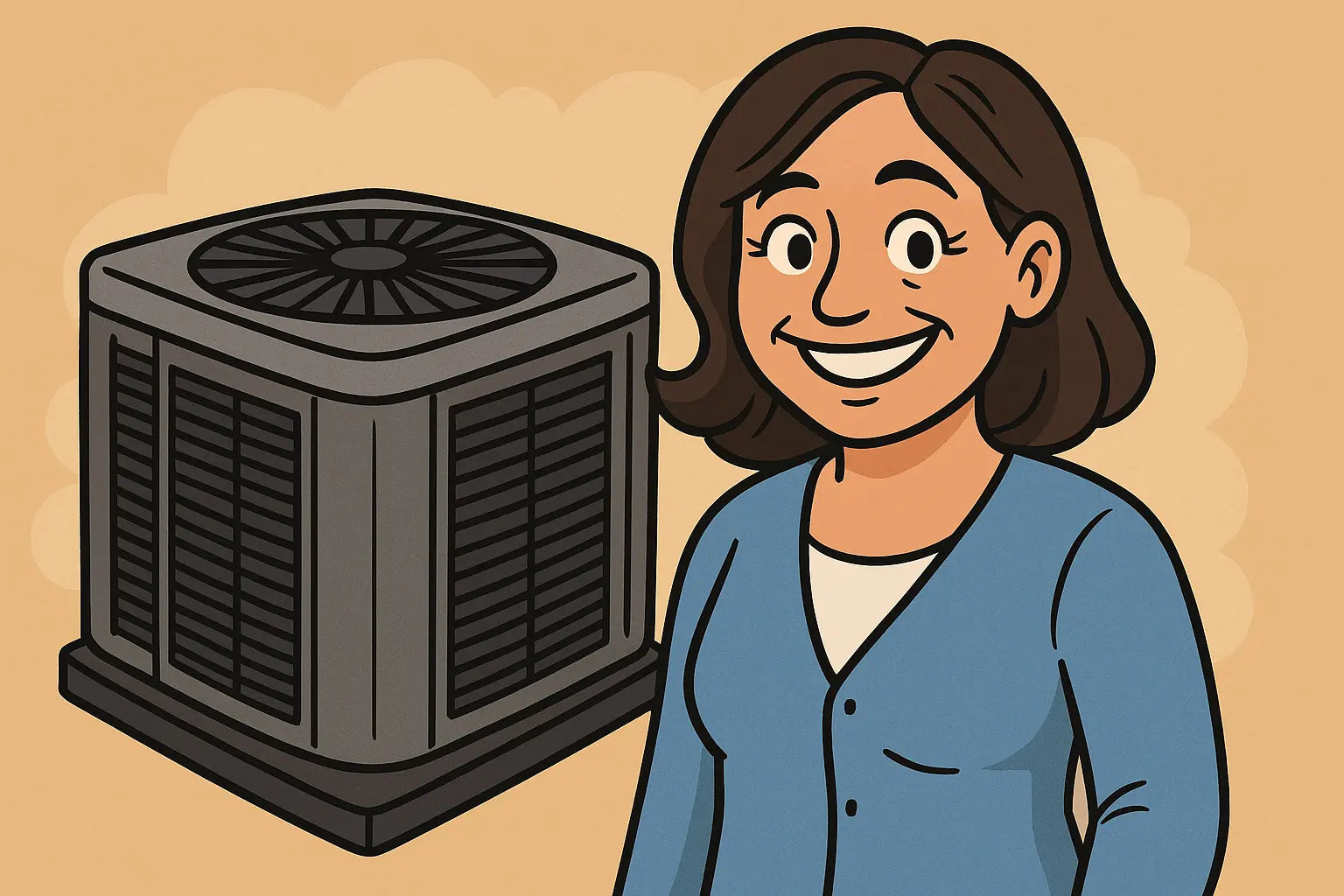Intro (From Samantha)
Hey friends! 👋 Samantha here—your personal shopper turned HVAC sleuth. If you're here, it's probably because you picked up the Amana Distinctions 12,000 BTU PTAC with 3.5 kW electric heat (good choice 💪), and now you're wondering what the heck to do with it. Whether you're installing it fresh or trying to decode a strange noise, don’t stress—I’ve got you covered. Let’s make this a no-drama PTAC experience.
1. Meet the Amana 12,000 BTU PTAC—What Makes It Tick
The Amana Distinctions model you just picked up is a through-the-wall PTAC (Packaged Terminal Air Conditioner). That means everything—the compressor, fan, electric heater—is packed into one unit that slides into a wall sleeve. It's built for room-by-room climate control and perfect for hotels, rentals, and even converted garages.
What sets this 12,000 BTU model apart is the 3.5 kW electric heater, offering powerful backup when temps drop. It's sized for rooms around 450–550 sq ft and runs on 208/230 volts, so you’ll need the right circuit to handle the load.
If you're new to PTACs, I recommend starting with a quick overview of how these units work from Energy.gov, which does a great job explaining how through-the-wall ACs differ from central systems.
2. Install Like a Pro: Step-by-Step PTAC Setup
Okay—let’s get this beauty in the wall. Before you plug in, prep smart.
Step 1: Check the Wall Sleeve
You’ll need a proper wall sleeve (they're sold separately) that supports the unit’s weight, slopes slightly downward to the outside, and is fully sealed from air leaks. If you’re unsure, Fina Metals' Blog has a great visual walkthrough on sleeve prep.
My tip: Don’t let this be your first time using a level. If that sleeve isn’t sloped just right, water will puddle inside and you’ll end up with musty smells (ew).
Step 2: Electrical Requirements
This unit draws real power. It's not your average plug-in appliance—you’ll need a 208/230V dedicated circuit with the correct receptacle (check the cord type). Match your unit’s voltage with the plug and breaker. Skipping this step can literally fry your new PTAC.
Want to make sure you're meeting local codes? Check with your city inspector or consult this NEC code overview from NECA.
Step 3: Slide It In & Secure It
Once your sleeve is ready and power is set up, it’s time to slide the unit in. Make sure it’s flush, with the front panel snugly attached. Use weather-seal foam or caulk to block outside drafts. 💨
3. Troubleshooting 101: When Things Get Weird
PTAC units are tough, but even the best can act up. Here’s a cheat sheet of the most common issues (and how to fix them like a boss):
Problem: No Power
-
Check if the breaker tripped or if the wall outlet is dead.
-
Some PTAC units have a hidden power switch behind the front grille (surprise!).
-
Still dead? Could be a blown fuse on the control board.
Problem: No Heat or Weak Heat
-
The 3.5 kW electric heater may not engage if voltage is too low.
-
Check the thermostat settings—make sure it’s not stuck in fan-only mode.
-
A bad heater relay or temperature sensor could be the culprit.
If you need wiring diagrams, the official Amana PTAC manual on ManualsLib has every circuit and component mapped out. Bookmark that baby.
Problem: Weird Noises
-
Rattling = loose fan or internal debris
-
Humming = motor or capacitor issues
-
Gurgling = refrigerant flow (normal-ish, unless it’s loud)
Pro tip: Rattles can sometimes be fixed by just tightening the chassis screws or front grille.
Problem: Water Leaks
-
Usually caused by a blocked drain or poor wall sleeve slope.
-
Clean the drain pan and make sure the sleeve slopes outward (yep, we’re back to gravity again).
This HouseholdAir article is super helpful for diagnosing other issues you might face—bookmark it if you're in the troubleshooting trenches.
4. Keep It Running Smooth: Routine Maintenance Tips
Treat your PTAC like a houseplant—it needs a little regular love.
-
Clean the air filter monthly. Dirty filters restrict airflow and reduce cooling power.
-
Vacuum the coils every few months to keep energy use low.
-
Clear the drain pan and check for mold (especially in humid zones).
-
Tighten screws and seals at least twice a year.
For a deeper dive, I love this GE Zoneline guide for install and maintenance—it works across most PTAC brands.
5. When to DIY & When to Call the Pros
Here’s where I draw the line—and you probably should too:
Call in a pro if...
-
The unit won’t turn on after basic checks
-
You see an error code on the LED screen
-
There’s a refrigerant leak (you’ll need EPA certification to handle R-410A or R-32)
-
You smell burning 🔥 (unplug it, stat)
Some repairs just aren’t worth the DIY risk. Trust me—I've been there with a screwdriver and a singed eyebrow 😅
Samantha’s Final Thoughts (and Encouragement 💬)
You did it—you’re now officially a PTAC rockstar! Whether you're mid-installation or knee-deep in fixing an unexpected issue, this guide has your back. And if you haven’t already snagged your unit, the Amana Distinctions 12,000 BTU PTAC with 3.5 kW Electric Heat is one of my top picks for value, performance, and all-season comfort. It’s powerful, easy to maintain, and built to last—just like you 💪.
Curious about electrical tips for your Amana PTAC? Visit: PTAC Electrical 101.
So go ahead, pat yourself on the back, breathe easy, and enjoy your perfectly climate-controlled space. And remember, if your PTAC starts acting up again, I’ll be right here—your HVAC whisperer with sass, smarts, and plenty of emojis.
Stay cool (or warm 😉),
—Samantha, Home Comfort Advisor 💁🧰







